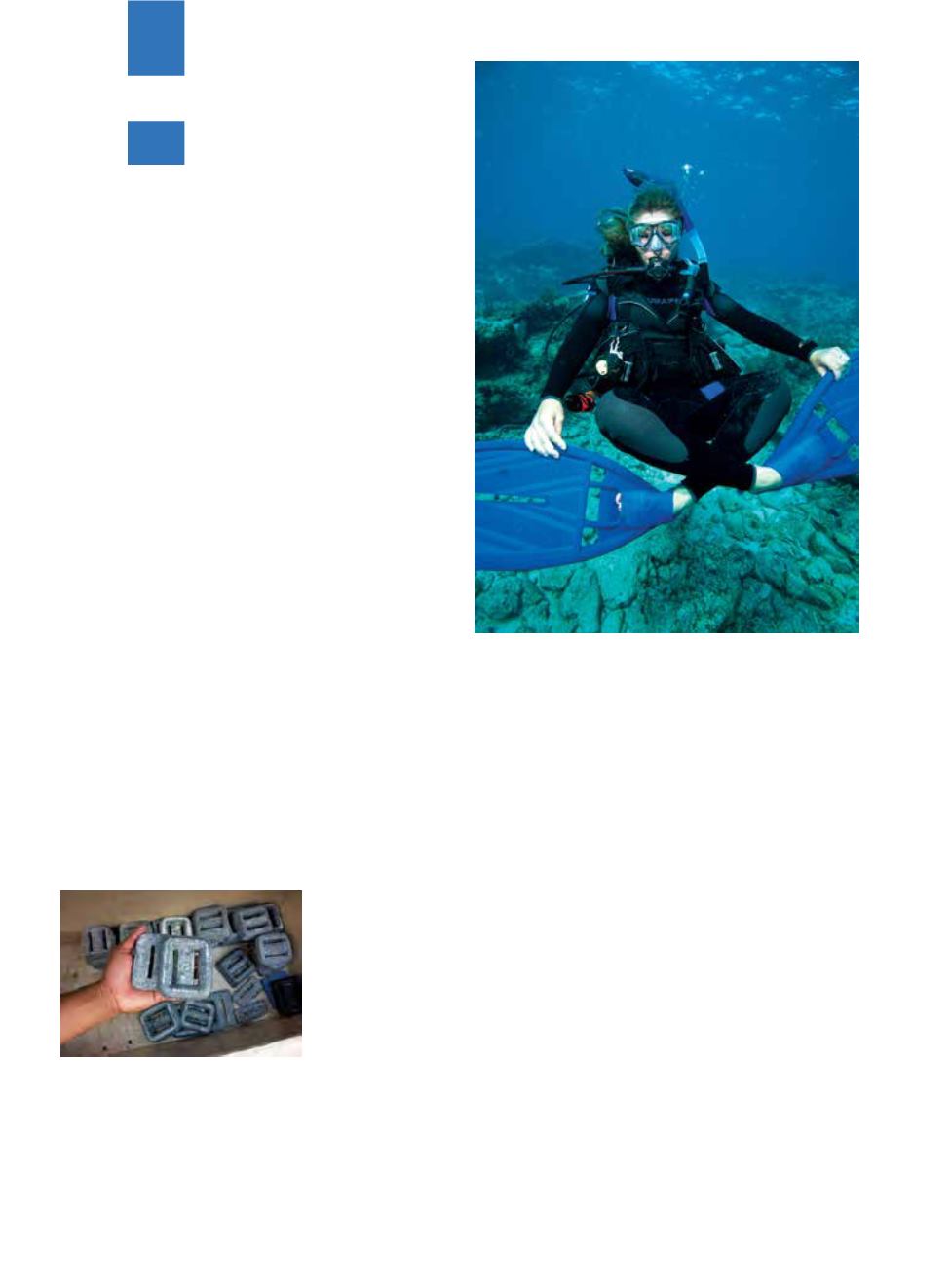
112
|
FALL 2014
E
arly in dive training, students learn that there
are three elements involved in buoyancy
control: the buoyancy compensator (BC),
weights and lung volume. Although most
divers are familiar with the need to be properly weighted,
many do not understand all that it entails. Students and
experienced divers alike make two common errors when
it comes to weighting: diving while overweighted and
failing to adjust the amount of weight used in response to
changes in equipment and environment.
DON’T WORK TOO HARD
Improper weighting makes it harder to achieve neutral
buoyancy. Many divers who wear too much weight
do not even realize they are overweighted. The excess
weight means that to achieve neutral buoyancy the
diver has to put more air into the BC bladders, which
can create a more upright profile in the water. The
upright position increases drag when swimming,
causing the diver to expend more effort and consume
more air. Underweighted divers can also become
significantly fatigued while trying to stay down. In
addition to increasing breathing-gas consumption,
extra exertion can elevate decompression stress.
GET IT RIGHT
You may have
heard a diver
say, “This is how
much weight I
always use.” While
field testing and
prior experience
can be useful, this statement shouldn’t be the endpoint
of a dialogue about weighting. Proper weighting
requires thought and practice, and the amount of
weight worn is not fixed. Over the course of our lives,
we experience change in muscle mass, body fat and
physical fitness. Equipment, including wetsuits, wears
out and gets replaced. Dive environments differ. All
these factors affect buoyancy and require adjustments
to the amount of weight used.
To determine how much weight you need, consider
your body weight, the exposure protection you will
be wearing, the weight of your equipment and the
environment in which you will be diving. Start with
weight equivalent to 10 percent of your body weight,
which is a good baseline for a 6mm full wetsuit. For a
3mm suit, use 5 percent of your body weight. Remember
that these percentages are simply starting points.
Drysuits and thick neoprene necessitate more weight
to counter the suits’ buoyancy than do thin neoprene
or dive skins. Body composition (muscle density, for
example) will influence whether more or less weight is
needed. Diving with an aluminum tank requires more
weight than diving with a steel tank.
Saltwater is denser than freshwater, thus increasing
the buoyancy of immersed objects and requiring more
weight to descend. Dive training typically begins in
freshwater environments such as pools, quarries or
lakes, so new divers should consider that even if they
are wearing the same exposure protection they will
need to add weight for ocean diving. The exact amount
of additional weight needed will vary from person to
person. Performing a buoyancy check in each situation
will help determine the correct amount of weight to add.
B Y M A R T Y M C C A F F E R T Y , E M T - P , D M T ,
A N D P A T T Y S E E R Y , M H S , D M T
GEAR
Weight Up!
STEPHEN FRINK
STEPHEN FRINK


